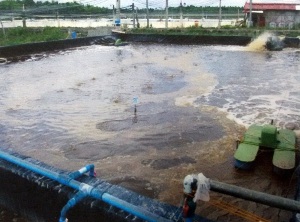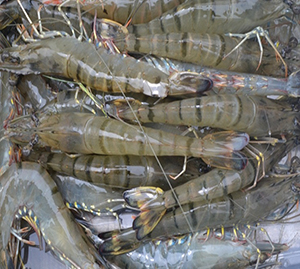 The outbreak of diseases in shrimp farms such as White Spot Syndrome Virus (WSSV), Hypodermic Haematopoetic Infectious Necrosis Virus (IHHNV), Taura Syndrome Virus (TSV), and Yellow Head Virus (YHV), has slumped the shrimp industry. This may translate to a loss in industry earnings, especially for farmed shrimps which is considered as an important foreign exchange earner.
The outbreak of diseases in shrimp farms such as White Spot Syndrome Virus (WSSV), Hypodermic Haematopoetic Infectious Necrosis Virus (IHHNV), Taura Syndrome Virus (TSV), and Yellow Head Virus (YHV), has slumped the shrimp industry. This may translate to a loss in industry earnings, especially for farmed shrimps which is considered as an important foreign exchange earner.
To address this concern, the Philippine Council for Agriculture, Aquatic and Natural Resources Research and Development of the Department of Science and Technology (DOST-PCAARRD) funded the project on biofloc technology (BFT), which helps improve shrimp’s nutrition and controls diseases.
The technology uses a microbial mat composed of aggregates of bacteria, algae, protozoa, detritus, and dead organic particles that help control the natural microbial activity in aquaculture ponds. It helps reduce reliance on protein from feeds and stabilizes water quality through waste recycling.
BFT improves shrimp’s nutrition, as it enhances feed conversion ratio (FCR), resulting in larger shrimps. Moreover, when carbon and nitrogen are sufficient in the culture system, the biofloc increases in number and size, thus becoming more visible to shrimps for their consumption.
Disease control can also be achieved through this technology. A well-developed biofloc water can contain more than 2,000 bacterial species, which can enhance shrimp’s immune system.
BFT may require high capital but it can be offset by higher production per cycle.
 BFT is being implemented by the University of the Philippines Visayas (UPV) under the leadership of Prof. Valeriano L. Corre, Jr.
BFT is being implemented by the University of the Philippines Visayas (UPV) under the leadership of Prof. Valeriano L. Corre, Jr.
BFT has already been pilot tested in three farms in Luzon, two in Visayas, and two in Mindanao. An average of 5.5 kg/cubic meter (m3) of P. vannamei was produced in tanks, while an average of 18 tons/ha for P. vannamei was produced in pond trials. A feed conversion ratio (FCR) of 1:3 was attained with 95% survival rate, with a stocking density of 800,000 per hectare in a 90-day culture period.
BFT will be featured along with DOST-PCAARRD’s leading R&D initiatives in the agriculture, aquatic, and natural resources (AANR) sectors during the National Science and Technology Week (NSTW) on July 25-29 at the Council’s complex. This year’s NSTW adopts the theme, Juan Science, One Nation.
The Council will also celebrate its fifth anniversary on July 28, 2016. This will highlight the National Symposium on Agriculture and Aquatic Resources Research and Development (NSAARRD) in the morning and awarding of papers in the afternoon. The NSAARRD showcases the most outstanding contributions of individuals and institutions in improving the state of the AANR sectors through research and development.
